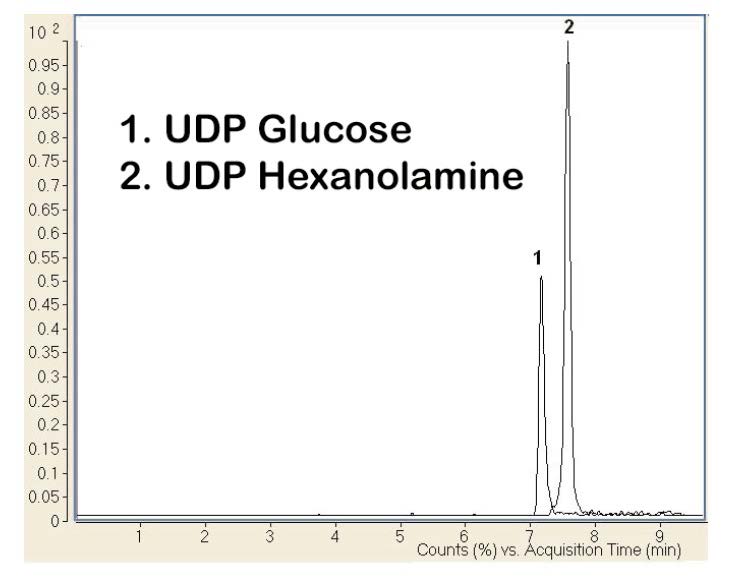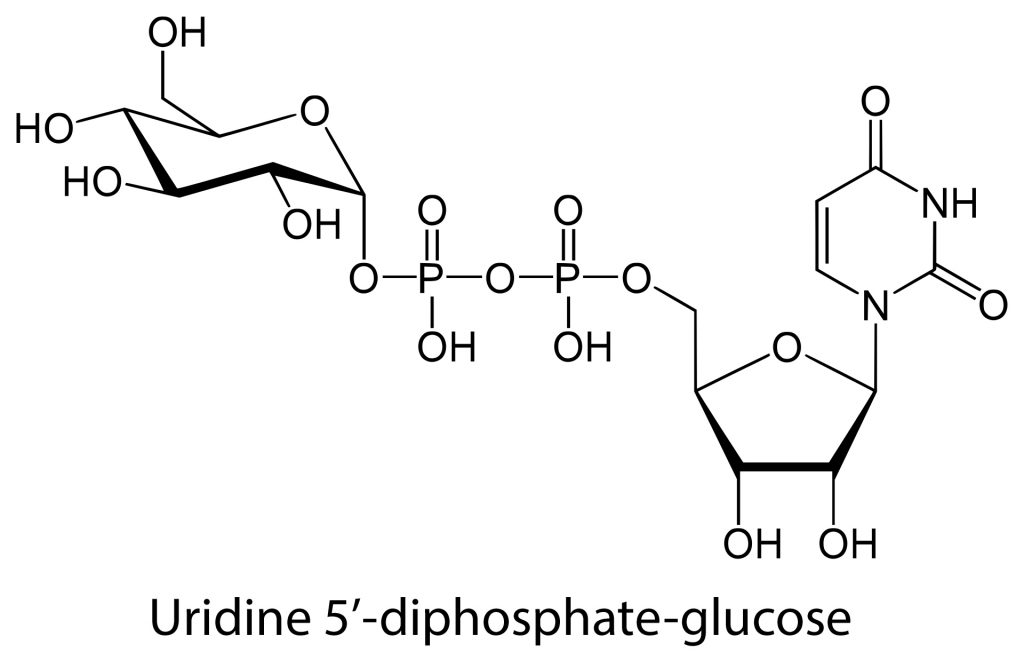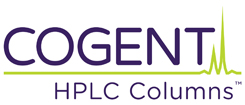Analyzing a Nucleotide Sugar with UDP-Hexanolamine as an Internal Standard
This Method is rapid and simple and it can also be used in measuring UDP Glucose. The advantages of using this Method to assay Nucleotide Sugars such as this one are the short Separation Time, long term Column Stability and rapid Equilibration time between a Gradient runs resulting in more throughput.
This Method can also be used to quantify UDP-Glc, an important metabolic intermediate and the substrate of enzymes catalyzing glycosylation reactions. Thus several enzymes producing UDP-Glc can be directly Analyzed using this Method with slight modifications.
Peaks:
1. UDP-Glucose
2. UDP-Hexanolamine
Method Conditions
Column: Cogent Diamond Hydride™, 4μm, 100Å
Catalog No.: 70000-15P-2
Dimensions: 2.1 x 150mm
Mobile Phase:
—A: DI Water / 0.1% Ammonium Formate (pH 7.2)
—B: 90% Acetonitrile / 10% DI Water / 0.1% Ammonium Formate (pH 6)
Gradient:
| Time (minutes) | %B |
| 0 | 100 |
| 3 | 95 |
| 6 | 70 |
| 7 | 70 |
| 8 | 50 |
| 9 | 50 |
Post Time: 5 minutes
Flow rate: 300μL / minute
Detection: ESI – neg – Agilent 6410 Triple Quadrupole LCMS/MS
Mass Data:
—1. UDP-Glucose – the monitored MRM transitions were m/z 565 to m/z 323
—2. UDP-Hexanolamine (internal standard) – the monitored MRM transitions were m/z 502 to m/z 258
Notes: Activated nucleotide sugars, such as UDP-glucose (UDP-Glc) are donor substrates of glycosyltransferases involved in protein glycosylation processes. Therefore, their availability can influence the glycosylation of proteins.
Attachment
No 62 UDP-Glucose Analyzed with LCMS pdf 0.3 Mb Download File




